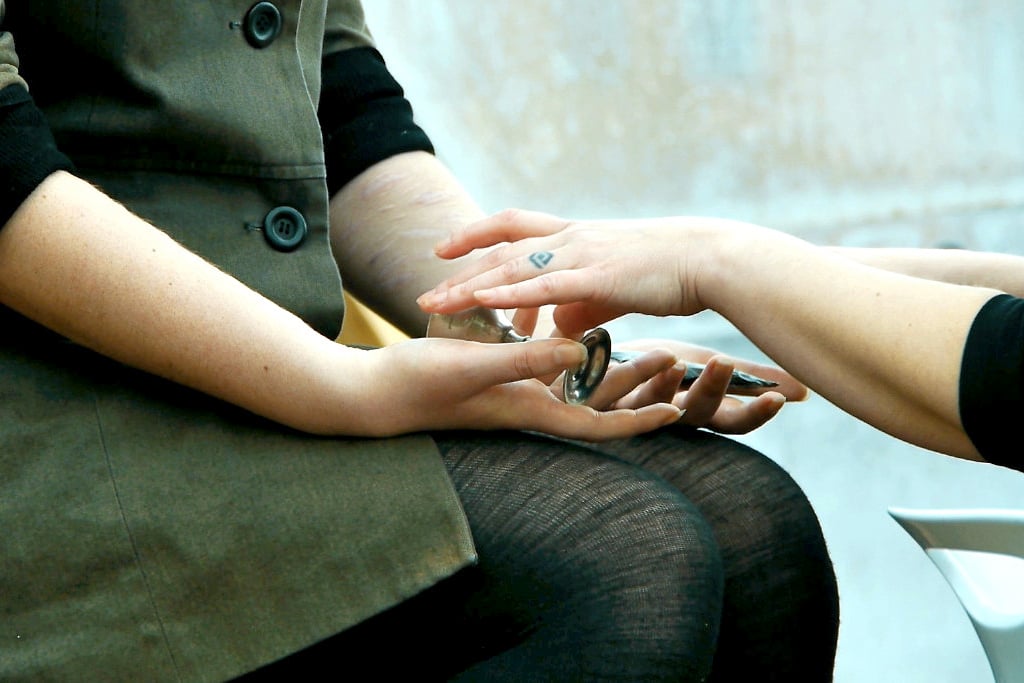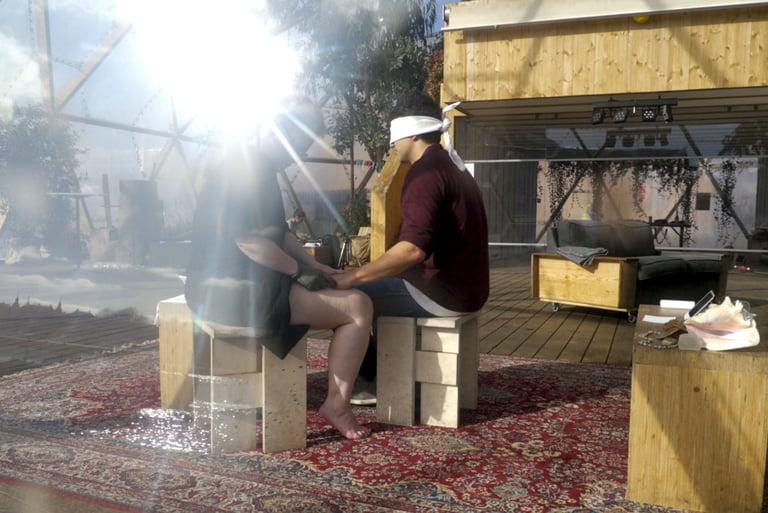Plato’s Cave
by Reality Research Center
Dome of Visions, Copenhagen, 2016
Plato’s Cave is a six-day contemporary mystery play that asks: what if truth must be lived, not found?
This immersive performance—the second part of Reality Research Center’s Mysteries of Love trilogy—took place inside the transparent architecture of the Dome of Visions in Copenhagen. Inspired by Plato’s allegory of the cave, the work stages a gradual emergence from illusion into reality, not as a philosophical argument, but as an embodied rite of passage.
Eight participants—referred to as protagonists—committed to the full arc of the experience. Over the course of four acts, they moved through encounters with three gods: Aphrodite, Dionysos, and Apollon. These figures did not offer answers but invited each protagonist to make a choice, construct a threshold, and practice becoming real.
The structure of the play unfolded as follows:
Act I – Shadows of Aphrodite
Where a choice is made, and the illusion of love is confronted.
Act II – Shadows of Dionysos
Where chaos is embraced and a gateway to transformation is built.
Act III – Shadows of Apollon
Where clarity is sought and the rehearsal of truth begins.
Act IV – The Cave
Where the protagonists return—changed—and liberate their real selves together.
While the first five days allowed a wider audience (the “choir”) to enter the space freely and observe, the final act was closed—reserved for the protagonists alone. In this way, Plato’s Cave questioned who truth belongs to, and what it costs to step out of the shadows.
Premiered in February 2016, the work continued the trilogy’s philosophical trajectory: if Plato’s Symposium (New York, 2013) searched for absolute beauty, Plato’s Cave sought absolute truth—fragile, relational, and hard-won.
Working group
Maria Oiva, Tuomas Laitinen, Jani-Petteri Olkkonen



